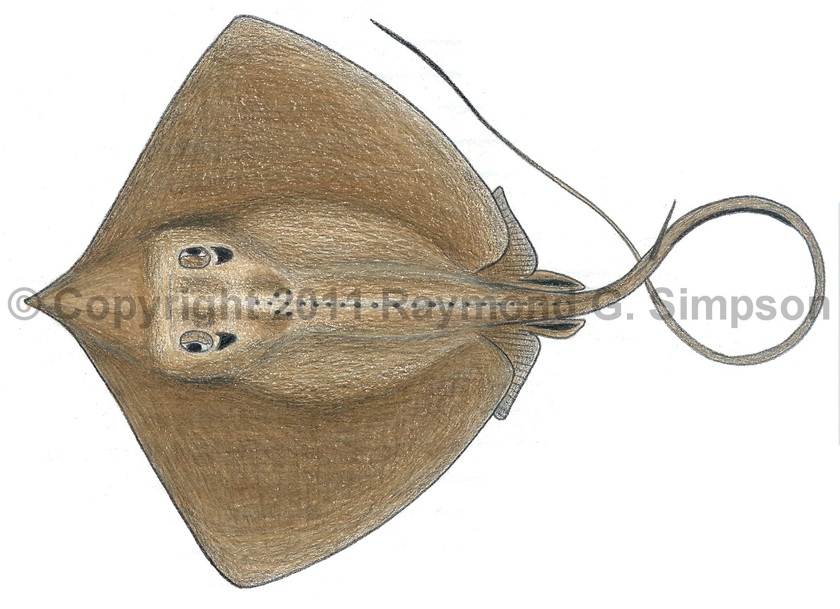
Common Name
Colares Stingray
Year Described
Santos, Gomes & Charvet-Almeida, 2004
Identification
A long-snouted species of Hypanus with a broad, rhomboidal disk. Eyes and spiracle relatively small. Tips of pectoral fins subangular to almost rounded. Pre-orbital length much longer than distance between the spiracles (29-37% SL), with pronounced concave margins of snout. Snout pointed and very long. Female snout with a median notch. The dorsal surface has a very broad patch of denticles, and a line of enlarged tubercles on the midline. Pelvic fins triangular but broad, and can extend past margin of disk, but are not greatly pointed or extended. Ventral finflap low but much more pronounced than dorsal finflap, which is reduced to a dermal crest. Tooth counts higher than any of the other long-snouted species of Dasyatis in the W. Atlantic (66-77).
Color
Uniformly brown above and pale below. Dark patches on side of mouth.
Size
A large species reaching a maximum size of 2.6m TL and 900mm Disk width.
Habitat
Coastal waters and estuaries in the Amazonian region.
Range
Endemic to northeastern Brazil where it is taken in the Amazonian Delta.
References
Last, P. R., Naylor, G. J. P., & Manjaji-Matsumoto, B. M. 2016. A revised classification of the family Dasyatidae (Chondrichthyes: Myliobatiformes) based on new morphological and molecular insights. Zootaxa, 4139 (3): 345-368.
Santos, H.R.S. , U.L. Gomes and P. Charvet-Almeida. 2004. A new species of whiptail stingray of the genus Dasyatis Rafinesque, 1810 from the southwestern Atlantic Ocean (Chondrichthyes: Myliobatiformes: Dasyatidae). Zootaxa No. 492: 1-12.
Other Notes
Provisionally placed in the genus Fontitrygon by Last et al. (2016) with other large Atlantic estuarine rays but likely not in that clade. Appears to be closest to the east Pacific Hypanus rubioi and Atlantic H. geijskesi which are also estuarine rays with long, broad snouts.